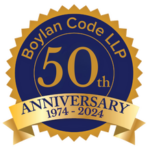Recently and perhaps in the Halloween spirit, I stumbled upon a link to Edgar Allen Poe’s 1842 bankruptcy filing. Despite his release of “The Murders In The Rue Morgue” a year earlier, the author was mired in debt and eager to take advantage of Congress’ recent enactment of the Bankruptcy Act of 1841.
Although the United States Constitution[1] specifically empowered the Legislative Branch to establish “uniform laws on the subject of bankruptcies throughout the United States,” Congress’ only attempt by that point was an utter failure – the Bankruptcy Act of 1800, which was repealed by 1803. Amidst the economic turmoil surrounding the Panic of 1837, Congress passed this second venture at financial relief, one labeled by some as the “first modern bankruptcy law.”
For the first time a debtor, broadly defined to include “all persons whatsoever” (by contrast, the 1800 Act was limited to “merchants”), could voluntarily petition the court for bankruptcy relief (under the 1800 Act only creditors were allowed to file debtors into bankruptcy involuntarily). To receive a discharge of debt, individuals were required to file two forms – a bankruptcy petition and detailed schedules of debts and assets.
As expected, the floodgates opened for individuals looking for a fresh start. For example, a young attorney by the name of Abraham Lincoln filed 73 bankruptcy petitions for his clients over the 17 months the law remained in place, including 19 in October 1842. As to the form of the schedules, Lincoln advised a referral attorney by letter that the clients should “be sure that [the schedules] contain the creditors names, their residences, the amounts due each, the debtors names, their residences, and the amounts they owe, also all property and where located.”
It was again, that same year of 1842 that Edgar Allen Poe himself filed for bankruptcy, listing creditors and debts in “Schedule A” and all of his assets in “Schedule B.” Of particular note was Mr. Poe’s limited description of assets, writing only the following: “The Petitioner is possessed of no Property, real, personal or mixed, beyond his wearing apparel, and a few printed sheets, of no use to any one else, and of no value to anyone.” In but one single sentence, Poe managed to provide the court a substantive snapshot of his assets, their use and value.
While a Chapter 7 trustee today may question the author’s forthrightness (“you’re telling me you’re a writer, but you don’t own a quill or inkwell – those are assets too Mr. Poe!”) his telltale summary goes to the heart of a bankruptcy schedule’s function: to allow for full disclosure by an honest and unfortunate debtor seeking the benefit of a bankruptcy discharge.
Although the breadth of today’s bankruptcy schedules have expanded dramatically, their fundamental purpose, a vehicle to accurately and honestly convey a debtor’s financials, was well-represented in this first round of voluntary petitions filed by attorneys such as Lincoln and debtors like Poe.
Nearly 175 years and several Bankruptcy Acts later, the topic of bankruptcy schedules is back in the headlines (well, at least in The Daily Record). On Dec. 1, the majority of the official bankruptcy forms, including the petition and schedules, will be replaced with substantially revised versions. Most of the revisions are more style than substance. The documents general format and inquiries generally mirror their immediate predecessor and the underlying purpose of the new schedules differ little from those completed in 1842. However, the fact they remained relatively unchanged for over 20 years makes the upcoming implementation significant.
The change is part of the Advisory Committee on Bankruptcy Rules’ Forms Modernization Project, with the intention of making the documents “easier to read and, as a result, likely to generate more complete and accurate responses.” From this initial description, two comingled themes are evident: (1) to generate a more complete response, the petition and schedules appear to be more detailed and of greater length; and (2) to make the forms easier to read, they have been drafted admittedly with an eye toward pro-se filers.
As to the former, the original three page voluntary petition has been replaced by a seven-part, eight-page petition. Schedules A (real property) and Schedules B (personal property) have been combined and increased an additional 4 pages. Schedules E (priority unsecured creditors) and F (unsecured creditors) have also been combined and increased in both detail and page number. An entirely separate petition and schedules have been created for individual debtors and “non-individual debtors.” Another new addition is the 44-page “Booklet of Instructions,” which provides a layperson an overview of bankruptcy, as well as guidance specific to each section of the bankruptcy schedules.
The Booklet of Instructions also stands as an example of the committee’s goal of aiding individuals who seek bankruptcy protection without the assistance of an attorney. Bankruptcy Judge Elizabeth Perris (D-Oregon) acknowledged that in revising the documents “we recognized that the debtors filing as individuals may not have the assistance of a lawyer, and they may not be as sophisticated about finances as, for example, a large corporate debtor … Our goal was to make the official bankruptcy forms more user-friendly and less error-prone.”
The “modernized” petition and schedules certainly carry a more laymen feel to them than their predecessors. For example, the new petition includes millennial-like headings such as “Tell the Court About Your Bankruptcy Case.” The bankruptcy schedule dealing with personal property has been relabeled into categories the committee hoped would be “more familiar to non-lawyers”, such as “electronics,” “jewelry,” “collectibles,” etc. Moreover, each category includes either examples (“Cash: money you have in your wallet, in your home, in a safe deposit, box and on hand when you file your petition”) or definitions (“Annuities: a contract for a periodic payment of money to you, either for life or for a number of years”) that were absent in the previous versions of the documents as they were typically left for an attorney’s explanation.
The Committee Notes to this section also highlight that it “simplifies wording …and uses more common terms.” It proudly lists as an example “‘Wearing apparel’ is changed to ‘clothes’” (which is a touch ironic, given “wearing apparel” was Mr. Poe’s only identifiable asset back in 1842).
As for potential ramifications, it is clear at the very least that come this bleak December practitioners need to ensure their petition and schedules resemble these revised forms. There also exists the possibility that the new forms will in fact encourage more pro-se filers. With the number of bankruptcies falling over the last few years, this result would not buoy up debtors’ counsel.
Coincidently, the Rochester Division of the Bankruptcy Court for the Western District recently advertised for what appeared to be a new position entitled “pro se paralegal.” Any increase in pro-se debtors will likely result in additional work for courts and bankruptcy trustees alike. For example, one substantive change to the schedules is a debtor’s ability to simply check an exemption box labeled “100% of fair market value” instead of identifying a specific dollar amount. Debtors may haphazardly choose this 100 percent option even if inapplicable, forcing trustees to file and courts to rule on time consuming objections.
On the flip side, neither the revised schedules nor the instruction manual offer pro-se debtors a link to the available federal or state exemptions, let alone a summary of the laws. This may lead an unwary layperson to file bankruptcy without properly protecting assets from her trustee. Similarly, if the revised forms encourage individuals to file without the assistance of counsel, they will also likely fail to identify potential issues such as fraudulent conveyances, preferential payments, non-dischargeable debts, lien avoidance procedures, etc.
I would encourage anyone who happens into bankruptcy court on occasion to familiarize herself with the forms, which are located at www.uscourts.gov (be wary of hitting print though, as they total nearly 270 pages). A thorough summary of these changes will also be presented at the Monroe County Bar Association this Friday, from 9 to 11 a.m.
As for Edgar Allen Poe, he successfully completed bankruptcy and received his discharge in 1843, the year the Bankruptcy Act of 1841 was repealed; not to be replaced until the economic turmoil following the Civil War. 1842 was also the year Poe published The Tell-Tale Heart. Perhaps it was during this voluntary stay of bankruptcy implemented on the filing of his petition and schedules, with room from his creditors to breathe, that Poe found time to entertain new literary ideas. As he wrote that year, “It is impossible to say how first the idea entered my brain; but once conceived, it haunted me day and night.”
[1] Yes, our founding fathers didn’t leave bankruptcy for an amendment, but placed it prominently in Article I, Section 8 of the Constitution, along with Congress’ ability to declare war, collect taxes and coin money. As my colleague Chris Werner likes to explain, America was founded by a number of criminals, fugitives and risk takers – many of whom were well versed in Europe’s debtor prisons.


